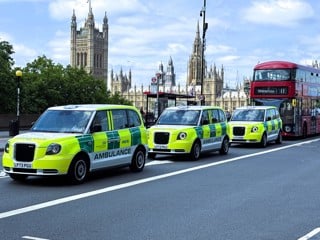By Richard Earl, director of research and development at EO Charging
Transport accounts for nearly a quarter of global emissions, with road and commercial transport responsible for a significant portion of those emissions.
The role of fleet electrification in helping the UK hit its aggressive net zero targets cannot be understated, but Government-backed support for it has been varied.
Both public and private sector organisations are awaiting the Autumn Budget with bated breath to see what support will be in place next year.
The Labour Government confirmed its commitment to the Zero-Emission Vehicle (ZEV) mandate in its campaign promises but it will need to work hard to put the support needed in place for fleet managers to be able to meet them.
The mandate calls for 80% of new cars and 70% of new vans sold in the UK to be zero-emission by 2030, increasing to 100% by 2035.
This is a critical commitment to stick to if the UK is to do its part in cutting global emissions, but the current state of support for fleet electrification doesn’t match up.
In order to make meaningful progress, we need to learn from the initiatives already in place in the UK and abroad and ensure funding is accessible across the country.
Better legislation required
Government policies and incentives significantly influence the potential for fleet electrification.
For example, the UK Government currently offers grants through the Plug-in Truck Grant scheme, which provides financial support for purchasing electric trucks.
As a result, the scheme helps reduce the upfront cost of purchasing electric trucks, making them more affordable for businesses and encouraging the adoption of cleaner, zero-emission vehicles in the commercial sector. However, more substantial support is needed, particularly when this scheme ends in 2025.
Positively, the new Labour government recently announced £88 million of funding will be awarded to 46 innovative projects to help boost zero-emission vehicle technology, and this is a welcomed effort.
It will see dozens of cutting-edge, green vehicle technology projects, including ultra-lightweight vehicles, zero-emission buses, and new battery technology, all benefitting from much-needed funding.
All this is good, but compared, for example, to some of the incentives and legislation we’ve seen China introduce, there is a lot more that could be done.
From lowering the cost of ownership of the vehicles themselves to breaking barriers in planning permissions that may prevent the necessary charging hubs from being constructed, China’s policies have reflected the end-to-end support required for electrification.
Where we expect the Government to focus
The UK government should focus on several key areas for additional funding to accelerate the electrification of the fleet sector.
Firstly, enhancing vehicle affordability by expanding grants like the Plug-in Truck Grant, or tax incentives, that will help lower the cost of electric vehicles (EVs) for fleet operators, making the transition more accessible.
Secondly, significant investment is needed in charging infrastructure, especially in underserved areas such as logistics hubs and motorways, to ensure fleet operators have reliable access to EV charging.
Streamlining planning permissions for charging hubs would also speed up the construction of essential infrastructure.
Additionally, targeted support for battery technology and energy storage advancements could help reduce overall running costs and increase vehicle range, making EVs more efficient for fleet use.
Finally, promoting green energy integration by encouraging fleet operators to adopt renewable energy sources could help ensure the UK meets Net Zero targets.
Funding gaps and infrastructure challenges
In the public sector, the path to funding requires greater clarity. In England, the money goes through councils, who decide how to spend it. In contrast, in Scotland, it goes straight to the operator, who can spend it as it wishes.
While both approaches have pros and cons, the disparity between the two countries is causing issues for operators, which could escalate further in 2025 and beyond.
Naturally financial support for public sector programmes and incentives for the private sector will be watched carefully.
Keir Starmer has warned this will be a ‘painful’ budget, but with the ZEV mandate currently set to be held in place, the industry will be waiting to see how these goals can be translated into meaningful funding.
The Government's £88 million funding for 46 innovative projects brings hope for further support to the commercial EV sector, especially with the upcoming Budget announcement.
Finally, transitioning to electric fleets hinges on access to a reliable and well-distributed network of charging infrastructure.
Unlike traditional internal combustion engine (ICE) vehicles, which benefit from a dense network of fossil fuel stations, electric vehicles require strategically placed charging points to ensure operational efficiency and to minimise disruptions.
Despite growing investment in EV infrastructure, the current network remains insufficient and unevenly distributed, presenting a major barrier to fleet electrification efforts globally.
Meeting the ZEV mandate requires more than pledges; it demands comprehensive support for fleet electrification across the public and private sectors.
The UK Government should look to address critical gaps in funding, infrastructure, and policy that currently hinder progress, in order to see the mandate meet its targets.
























Login to comment
Comments
No comments have been made yet.